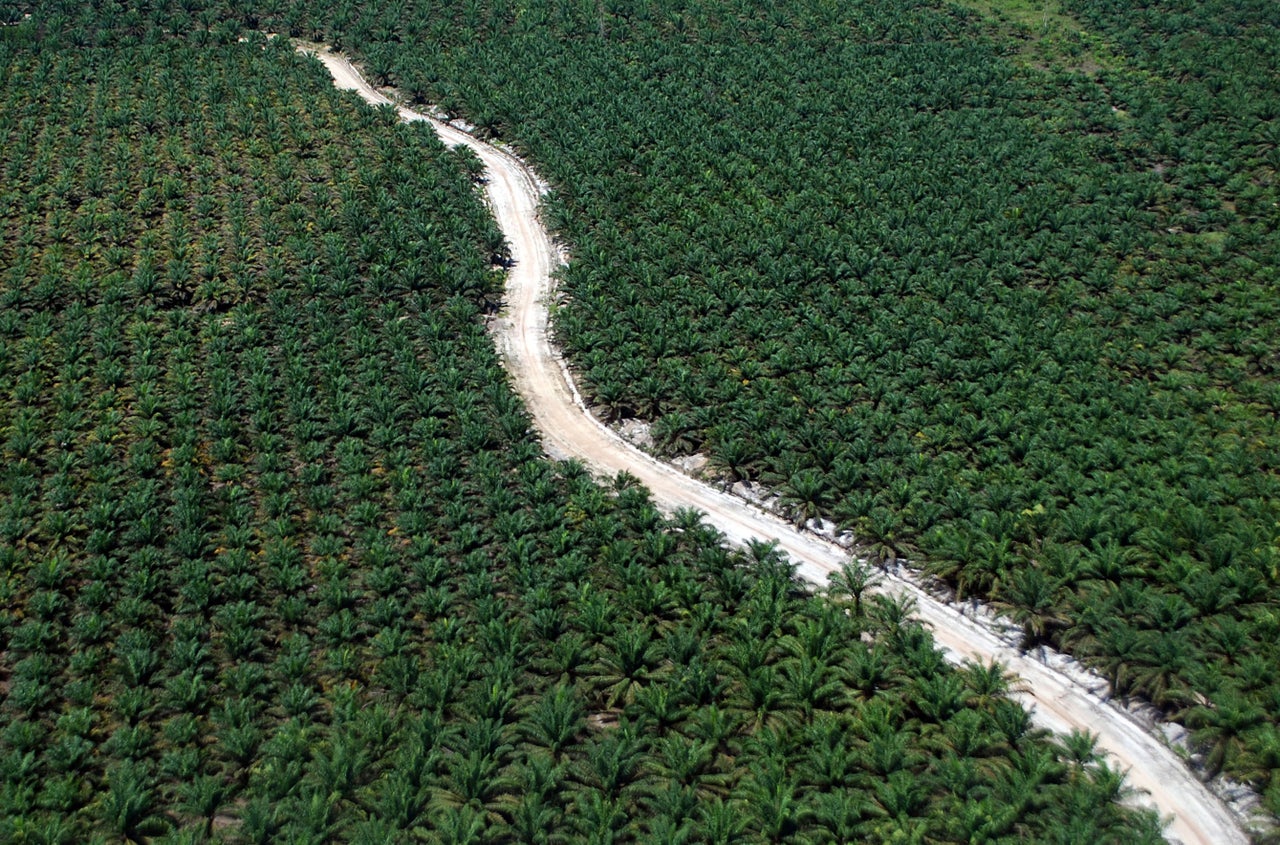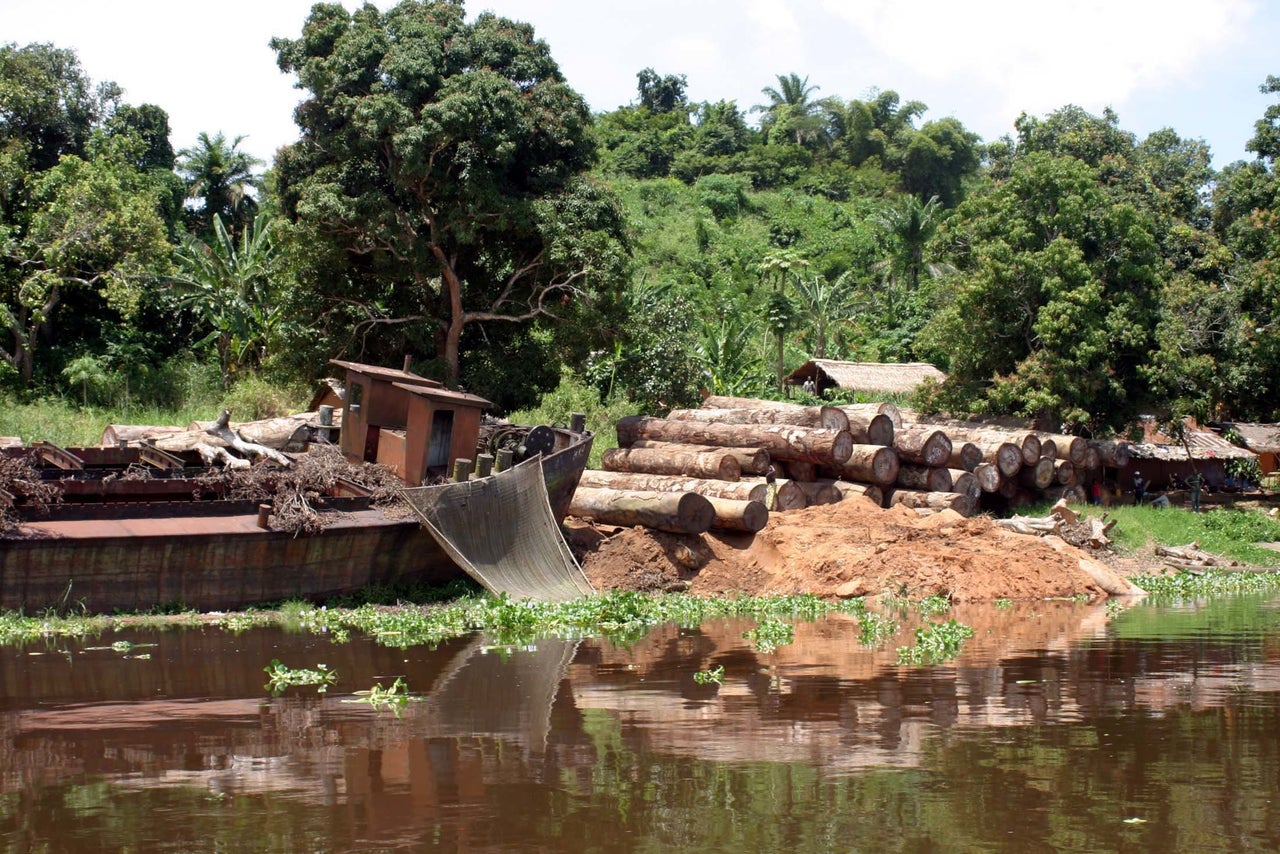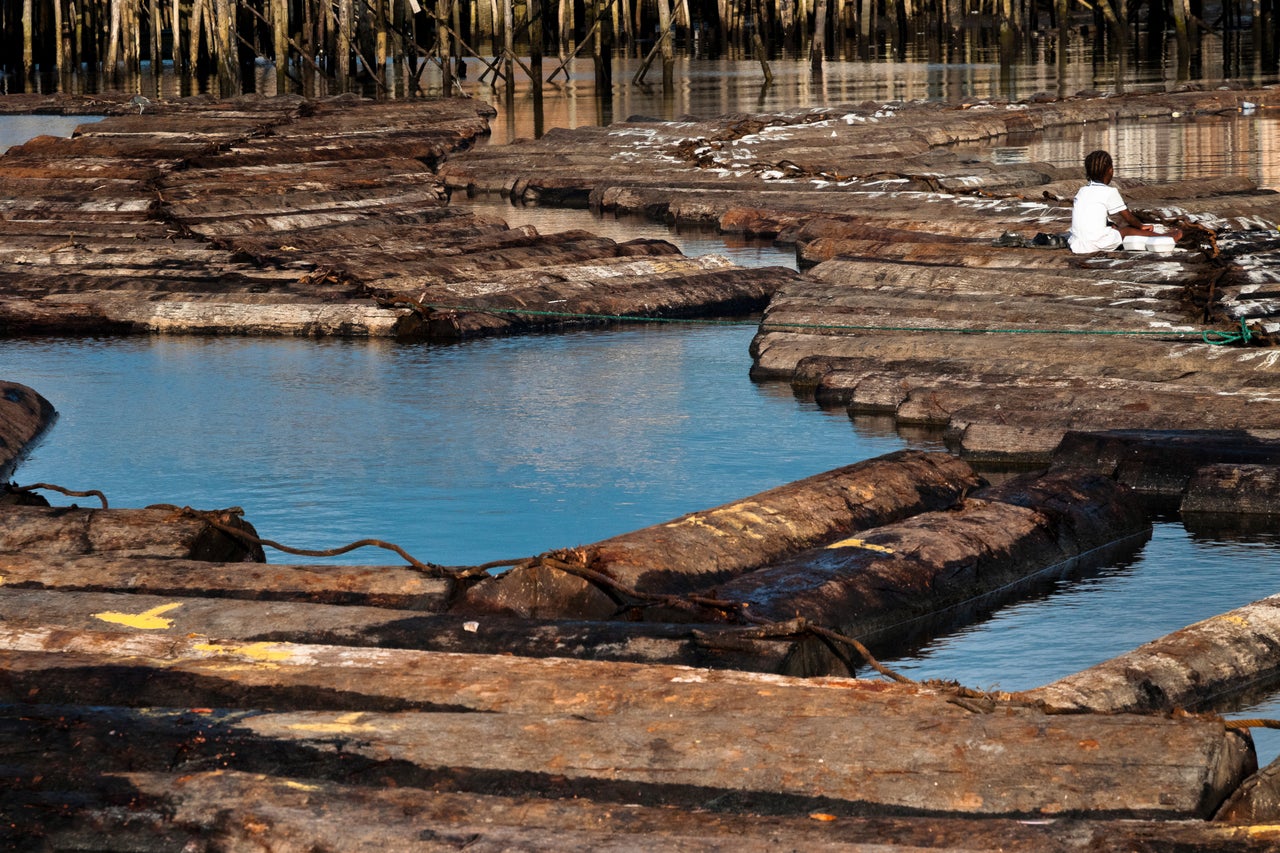Enough trees to fill 44 football fields were lost from tropical forests every minute of every day during 2017 as the world racked up its second worst year for global tree cover loss, according to new data from the University of Maryland published by the World Resources Institute.
The worst year was 2016, when a strong El Niño ― a weather event that causes both droughts and floods ― was in play. Even so, fire, chainsaws and disaster erased about 37 million acres (58,000 square miles) of tropical forest in 2017, an area larger than Bangladesh.
The scale of the devastation left WRI experts scrambling for metaphors to convey the “total inadequacy” of the current conservation picture.
“We are trying to put out a house fire with a teaspoon,” said Frances Seymour, a senior fellow at the institute.
Rainforests are a vital carbon sink, absorbing emissions created by human activity. Once they are cut down, though, they release all the carbon they have stored over a lifetime. Deforestation, at the current rate, is thought responsible for a tenth of global emissions.
Yet studies show that rainforest nations such as Brazil and Indonesia have spent over 100 times more on subsidies for sectors that drive deforestation ― palm oil, timber, soy, beef and biofuels ― than they received in international aid to prevent deforestation.

Last year, Norway slashed its forest protection payments to Brazil by more than half in response to a 29 percent spike in deforestation and the Amazonian country’s decision to halve its own environmental funds.
Andreas Dahl-Jørgensen, the deputy director of the Norwegian government’s International Climate and Forest Initiative, said the new report revealed “an alarming story.”
“These numbers are a call to action for everyone ― forest countries, the international community and private sector,” he said. “We simply won’t meet the climate targets we agreed in Paris without a drastic reduction in deforestation and the restoration of forests around the world.”
Brazil still leads the world in forest clearances, according to the report, with 11.1 million acres of foliage disappearing last year, but there has been a rapid deterioration in other countries, such as the Democratic Republic of Congo.
Almost 3.7 million acres of forest were lost there in 2017, a 6 percent increase over 2016, as the population grew and agricultural practices intensified. But the DRC’s worst year yet for deforestation is unlikely to mark a turning point.
Earlier this year, the DRC government awarded two Chinese companies logging concessions across 2,510 square miles of tropical forest, partly located on the world’s largest peatlands zone. Ranging across territory the size of Iowa, it stores an estimated 30 billion metric tons of carbon.

Tosi Mpanu Mpanu, DRC’s lead climate change negotiator and a government environmental adviser, denied that the new concessions breached a logging moratorium in place since 2002 banning new industrial logging.
But, he told HuffPost, “at the end of day, let’s face it: The moratorium is showing limited results. The problem is not with the people that have logging concessions, who have to abide by certain rules. The problem is runaway illegal logging.”
Most tree clearances in the country were caused by subsistence agricultural practices and energy needs, he said. “It is about people’s survival, not destroying the forest or trying to make a quick buck by exporting crops.”
“If you need to put food on your plate, you will do slash-and-burn agriculture,” he said. “If you need energy and don’t have efficient cooking stoves or solar panels, you will use charcoal and cut down trees. We need to align poverty alleviation with forest protection, because they are two sides of the same coin.”
Colombia also saw a record year for deforestation in 2017, with 1.2 million acres of forests denuded, a 46 percent rise on the previous year and more than double the rate of loss seen in the 2001-2015 period. WRI says ranchers and business groups took advantage of a power vacuum created when the guerrilla movement FARC abandoned its Amazon base as part of a peace deal.

An unprecedented hurricane season in the Caribbean destroyed a third of Dominica’s forests and a tenth of Puerto Rico’s.
Brazil was also hit hard by fires ― mostly human-caused ― and by land clearances, as the new right-wing government rolled back environmental protections and law enforcement protocols, adding to political uncertainty.
In total, 72.6 million acres of trees were lost last year, a shade below the 73.4 million acres recorded by the WRI in 2016. Those numbers are substantially higher than the United Nations Food and Agriculture Organization numbers, which were last published in 2015 and come out every five years.
WRI bases its assessment on satellite-monitored, near real-time changes in global tree cover, whether natural forests, parks or tree plantations. New tree growth is measured separately.
The U.N. FAO, however, uses statistics that are self-reported by governments, and exclusively monitors forests that meet a standardized description. That means it would not count recently logged land as “forest loss,” if official inventories said trees would be allowed to regenerate there in the future.
“The main reason why tropical forests are disappearing is not a mystery,” Seymour said. “Vast areas continue to be cleared for soy, beef, palm oil and timber.”
These four commodities are responsible for most of the world’s tropical deforestation but beef plays an outsize role in the worst-affected countries, causing more than twice as much deforestation as the other three commodities combined.

In South America, conservation scientists blame cattle farming for 71 percent of the deforestation between 1990 and 2005, compared with other commodity production ― including coffee, rubber, cocoa and sugar ― which caused just 17 percent of the damage.
Demand for beef, soy, palm oil and timber is strong domestically, in the world’s rich north and ― increasingly ― in emerging economies such as India and China.
However, the typical American eats four times more beef than the global average of 14.6 pounds per person per year, even though it is the most nutritionally and energy-inefficient food available. Experts see the appetite of the developed world for agricultural commodities as the key driver of rainforest destruction.
“A lot of export crops linked to deforestation go to the world’s rich markets,” Rod Taylor, WRI’s global forestry director, told HuffPost. “We see a lot of commitments to the notion of deforestation-free supply chains in the private sector and we need to keep pressure on companies to turn that into a reality.”
The European Union already has a timber regulation intended to tackle the $100 billion a year trade in illegal wood products, although EU auditors have found no evidence it is working.
Less than a third of tropical timber products sold in Europe in 2016 had been verified as sustainable, according to a report released Tuesday. If the EU’s seven main timber-importing countries ― the U.K., Netherlands, Germany, France, Italy, Belgium and Spain ― sourced sustainably, more than 12.4 million acres of rainforest could be protected, it said.
The EU agreed earlier this month to phase out palm oil products from the continent’s biofuels by 2030, after pressure from the European Parliament for a more immediate ban.
Victoria Tauli-Corpuz, the U.N. special rapporteur on the rights of indigenous peoples, said one of the most effective ways of preserving the world’s rainforest treasures is to empower forest communities.
“They have long stewarded and protected the world’s forests, which is crucial to the fight against climate change,” she said. “The rate of tree cover loss is less than half on indigenous people’s lands, compared to elsewhere. Where their legal rights to the land are recognized, the rate is even better.”
While indigenous peoples occupy more than half of the world’s land area, they have secure rights in just 10 percent of them. Last year, many of the 197 environmental defenders killed were indigenous forest guardians.
The one glimmer of hope in an otherwise bleak dataset was a surprising 60 percent drop in the rate of primary forest loss in Indonesia, partly attributed to a peatland drainage moratorium passed in 2016.
Putera Parthama, the Indonesian government’s climate change director, said the logging ban, improved fire management and enhanced law enforcement helped make his country the only tropical nation with a declining rate of forest clearances.
“The lack of an El Niño this year doesn’t negate the impact of what we are undertaking,” he said. “We hope and expect that Indonesia will soon no longer be associated with deforestation in the region.”
For more content and to be part of the “This New World” community, follow our Facebook page.
HuffPost’s “This New World” series is funded by Partners for a New Economy and the Kendeda Fund. All content is editorially independent, with no influence or input from the foundations. If you have an idea or tip for the editorial series, send an email to thisnewworld@huffpost.com
